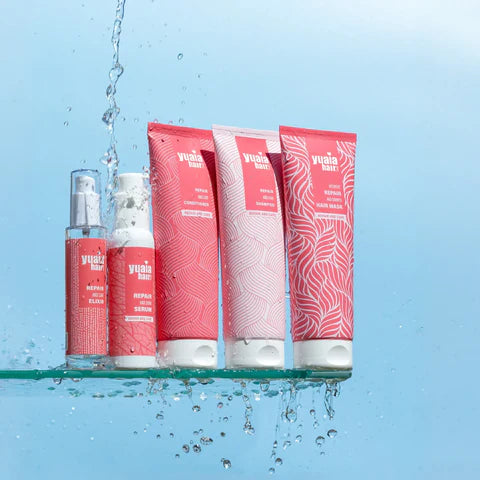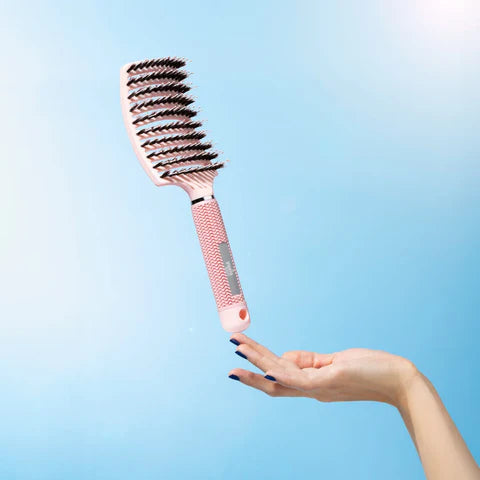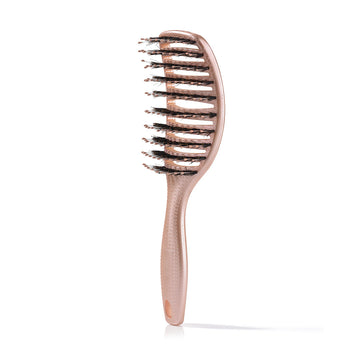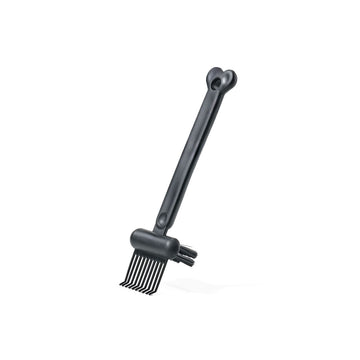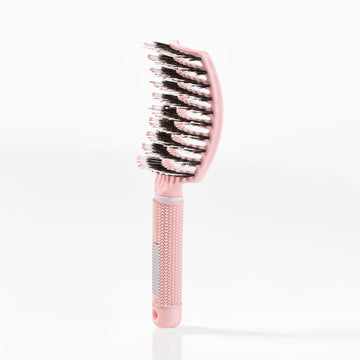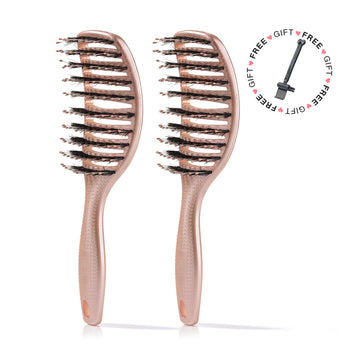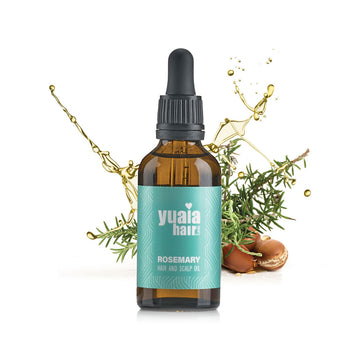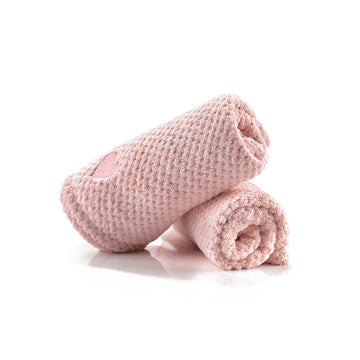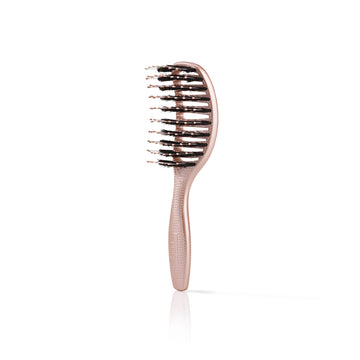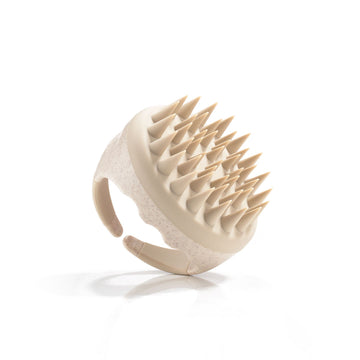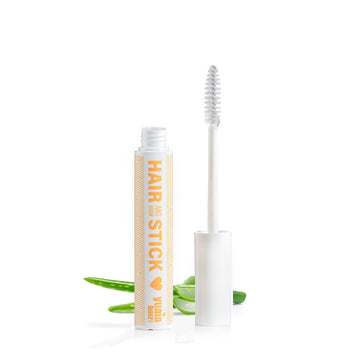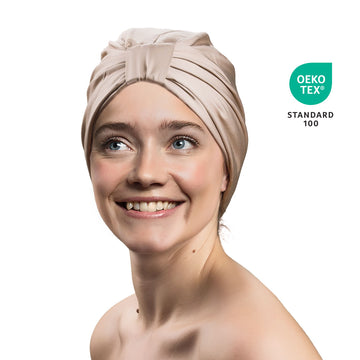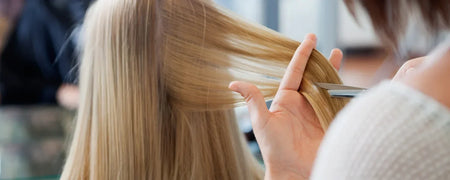
When to use thinning shears
Always thin hair when it's clean and dry. Dry hair shows the natural fall and volume, allowing you to see exactly where bulk needs to be removed. Avoid using thinning shears on wet hair, as it can lead to uneven results once the hair dries. Also, refrain from thinning near the roots or crown unless absolutely necessary, as this can create flyaways or overly thin patches.
Step-by-step: How to thin out hair with thinning shears
-
Start with clean, dry, and detangled hair to ensure precision and avoid uneven results.
-
Section your hair using clips. Begin with the bottom layers and gradually work your way up to maintain control and even distribution.
-
Take a small section of hair and hold it out horizontally from your head, keeping tension for accuracy.
-
Position the thinning shears at mid-shaft or near the ends—never at the roots—to avoid removing too much volume.
-
Hold the shears at a 45-degree angle. Make a light snip and gently comb through the section to disperse the cut hairs.
-
Assess the results after each cut. Thinning is subtle work—less is more—so go slowly and check your progress often.
-
Repeat this process on other sections, always working in thin layers. Be mindful to keep your cuts evenly spaced and avoid over-thinning one area, especially around the crown or hairline where hair is most visible.
Tips for different hair types
Fine to medium hair: Use shears with more teeth and make fewer cuts to maintain a natural look and avoid over-thinning. It’s often best to snip just once or twice per section, focusing on the mid-lengths and ends rather than the roots. This helps create a subtle reduction in volume without compromising overall fullness.
Thick hair: Use shears with fewer teeth, which allow more hair to be removed with each cut. Divide the hair into smaller sections and work methodically through the layers, being careful not to remove too much at once. Gradual thinning gives you better control over the final shape and helps maintain natural movement and bounce.
Curly or textured hair: Always thin it when dry so you can see the true shape and shrinkage of the curls. Use a light hand and thin out small, strategic areas to avoid frizz and preserve curl definition. Focus on the outer layers and avoid cutting into the body of the curl, as this can lead to uneven or puffy sections.
Common Mistakes to Avoid
-
Over-thinning can lead to frizz or limp hair. Go slow and check your progress often.
-
Thinning too close to the scalp can create awkward volume or patchy areas.
-
Using regular shears instead of thinning shears won't deliver the same soft, blended results.
Aftercare and maintenance
Space out your thinning sessions every 6-8 weeks to avoid over-processing your hair, which can lead to weakened strands and uneven texture over time. Giving your hair ample recovery time between sessions helps preserve its natural strength and movement. It's also a good idea to assess how your hair responds after each thinning session before planning the next one.
For best results:
-
Wait 6–8 weeks between thinning sessions to allow hair to recover.
-
Assess your hair's condition after each session to adjust your approach if needed.
Follow up with hydrating hair products, especially sulfate-free shampoos and conditioners, to maintain healthy strands and retain moisture.
Recommended care includes:
-
Sulfate-free shampoo and conditioner to reduce dryness.
-
Weekly deep conditioning treatments to boost nourishment.
-
Leave-in conditioners to lock in moisture and softness.
Avoid excessive heat styling whenever possible, as thinning can make the hair more susceptible to damage.
Tips for heat protection:
-
Use heat protectant spray before styling with hot tools.
-
Limit heat use to special occasions rather than everyday routines.
-
Apply smoothing serums or leave-ins to reduce frizz and protect from humidity.
With the right care, thinned hair can remain healthy, vibrant, and easier to style, all while maintaining its natural beauty.
From bulk to balance
Learning how to thin out hair with thinning shears can make a noticeable difference in your routine. With the right technique and tools, you can achieve lighter, more manageable hair without giving up length or style. Start slow, be gentle, and let your hair guide the process.
Frequently Asked Questions
Can I use thinning shears on wet hair?
No, it's best to use thinning shears on clean, dry hair. Dry hair shows its natural volume and fall, helping you see exactly where bulk needs to be removed and preventing uneven results.
How often should I thin out my hair?
It's recommended to thin out your hair every 6–8 weeks. This allows your hair to recover between sessions and helps prevent over-thinning or damage.
Will thinning shears damage my hair?
When used correctly and sparingly, thinning shears should not damage your hair. Avoid overuse and always follow up with hydrating and nourishing hair care products to maintain hair health.
Can I thin out curly or textured hair?
Yes, but always thin curly or textured hair when it's dry and use a light hand. Focus on the outer layers and avoid cutting into the body of the curl to prevent frizz and unevenness.
What’s the difference between thinning shears and regular scissors?
Thinning shears have one serrated blade and one straight blade, allowing them to remove only some strands with each snip for a blended, soft effect. Regular scissors cut all the hair in a section, which can create blunt lines and remove too much bulk at once.
 2-4 day UK delivery
2-4 day UK delivery
 25.000+ satisfied customers
25.000+ satisfied customers
 Satisfaction Guarantee
Satisfaction Guarantee



